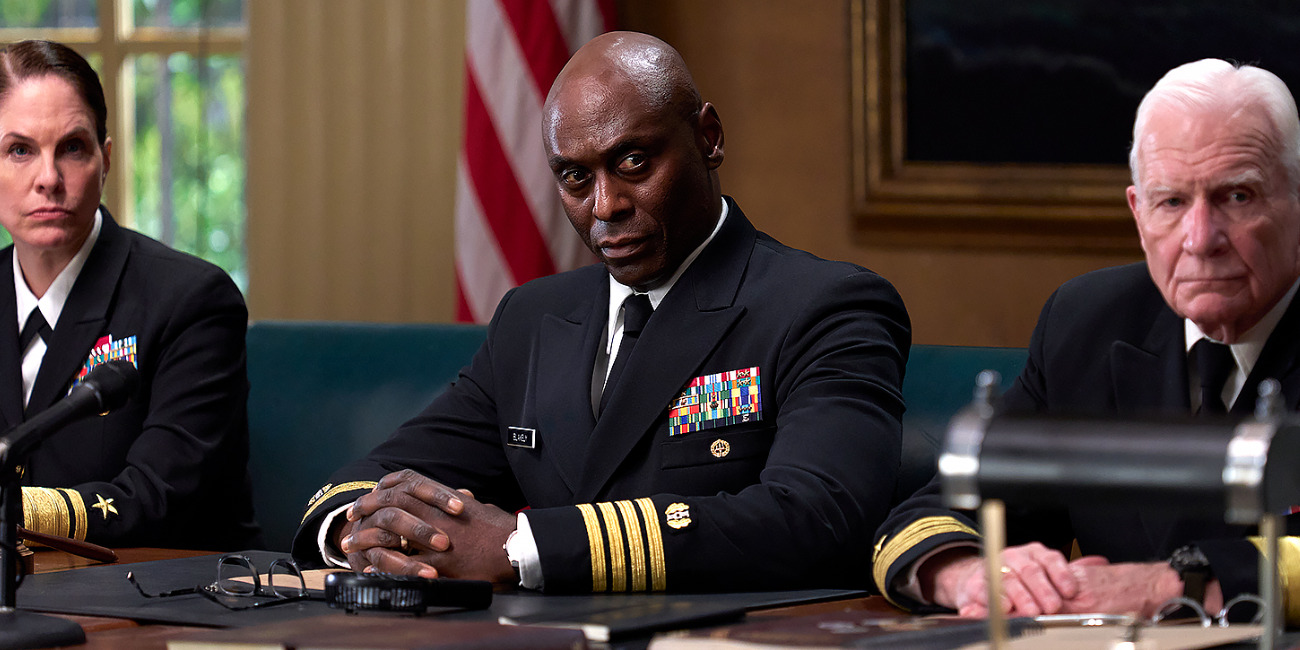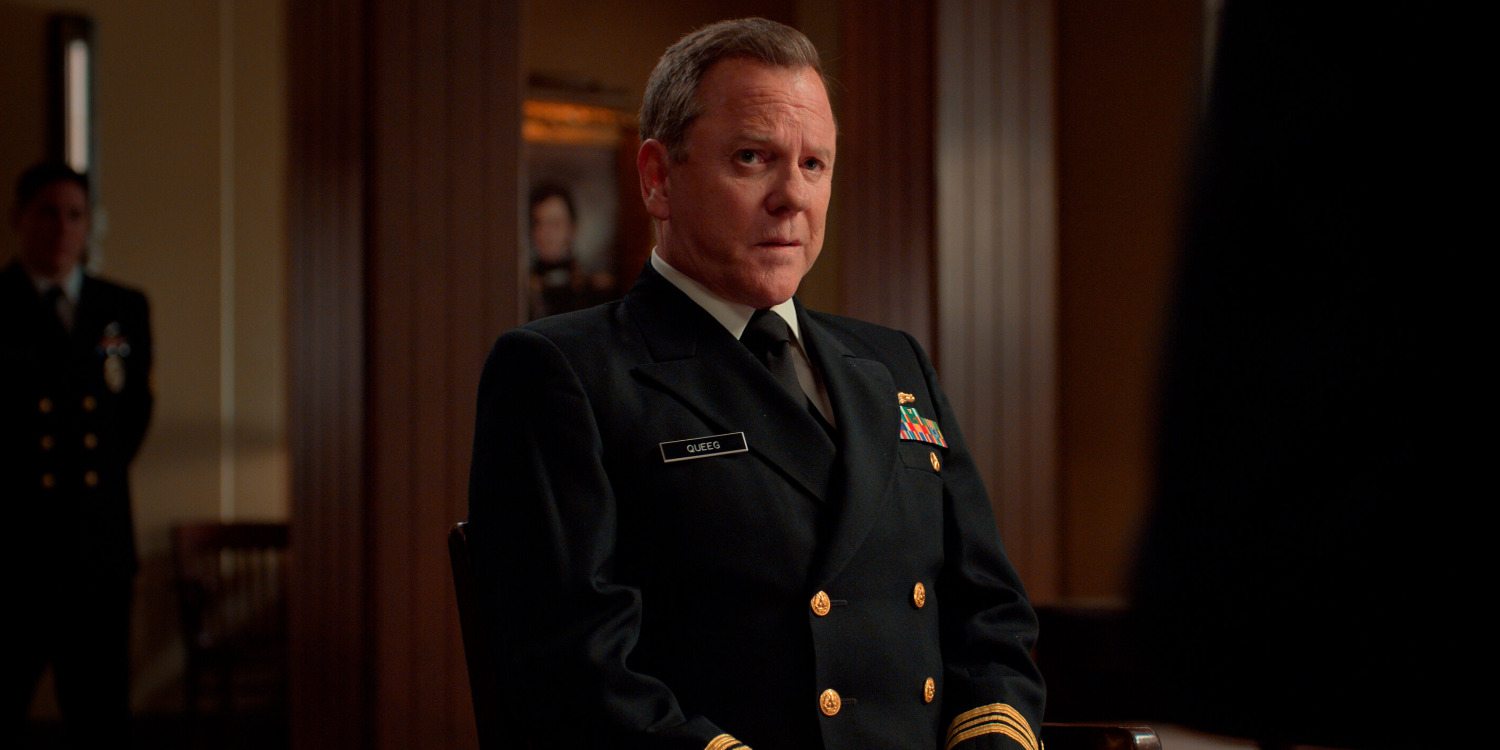Showtime’s ‘The Caine Mutiny Court-Martial’ is a courtroom drama film that revolves around the trial of a naval officer with only the characters’ testimonies as the presented evidence for the jury as well as the audience. After first officer Lieutenant Stephen Maryk relieves Lieutenant Commander Phillip Queeg of his command of the USS Caine vessel due to the latter’s mentally unstable actions, the former faces court-martial for his mutiny. During the court-martial, Lieutenant Barney Greenwald begrudgingly becomes Maryk’s defense attorney. Thus, the court tries to uncover the events that unfolded aboard USS Caine during the violent sea storm that preceded Maryk’s mutiny.
The film’s exploration of protagonist Maryk’s mutiny within the narrative’s single setting leads to a thrilling and suspenseful chase for the truth. Strengthened by powerful performances by Kiefer Sutherland, Jake Lacy, and Lance Reddick, the film delivers a compelling play-by-play of a captivating case. Yet, due to the film’s basis in the U.S. Navy and its straight-faced execution, viewers might be wondering about the story’s connection to any true event. Let’s find out!
Origins of The Caine Mutiny Court-Martial
‘The Caine Mutiny Court-Martial,’ released posthumously after Director and Writer William Friedkin’s death, is not based on a true story. Instead, the film is an adaptation of Herman Wouk’s eponymous stage play, which was, in turn, an adaptation of the writer’s 1951 novel, The Caine Mutiny. The two-act stage play is a dramatization of the events that took place in the climax of Wouk’s novel, wherein the characters deal with the aftermath of the titular mutiny.

The Pulitzer Prize-winning novel ‘The Caine Mutiny’ itself is a work of fiction brought to existence through Wouk’s personal experience of his service in the U.S. Navy during World War II. As such, Wouk’s informed knowledge of life in the Navy through first-hand experience weaved the story with an intrinsic authenticity that shines through in every adaptation. Previously, Edward Dmytryk adapted the novel as a film in 1954. Likewise, the play was brought to the screen as a TV play directed by Franklin J. Schaffner and went on to win multiple Emmys in 1956, including one for Best Television Adaptation.
However, Friedkin’s iteration sets itself apart from past renditions through a modernization of the book/play’s events. While the original story focused on the American landscape following the Pearl Harbour attack, Friedkin refurbished the plot for the post-9/11 world. In a 2022 interview with Deadline, the filmmaker discussed this change and said, “The original piece was written for WWII, and Wouk included all the pent-up anger in this country over Pearl Harbor. I’ve updated it so that [it] is no longer Pearl Harbor. I’ve made it contemporary, involving the Gulf of Hormuz and the Straits of Hormuz, leading to Iran.”
Therefore, despite the story’s lack of basis in reality, Friedkin preserved the narrative’s socio-political context and equipped a modern lens on it. By doing so, the filmmaker ensures that the situation’s gravity and background aren’t lost on the viewers and that they’re able to connect with the situation unfolding in front of them.
For Friedkin, ‘The Caine Mutiny Court-Martial’ came as a long-awaited return to filmmaking after his last feature film, the 2011 thriller ‘Killer Joe.’ The Director, best remembered for his influential works, including ‘The Exorcist’ and ‘The French Connection,’ had a hard time finding a project that captivated him after ‘Killer Joe.’ Yet, when the time came, Friedkin realized Wouk’s courtroom drama could be the perfect thing for him, citing it as “a very timely and important piece.”
While discussing the novel Wouk’s work, Friedkin shared, “There never was a mutiny in the United States Navy. Herman Wouk virtually created the first and only mutiny in the United States military,” The filmmaker went on to applaud the novelist’s storytelling and said, “His dialogue is terrific, right to the point. It’s set at a trial, but it’s all really by the book in terms of accuracy. But there never was a mutiny in the United States military. He invented it, and all that would take place around it based on the laws that cover it.”
Similarly, though Friedkin’s film is not a depiction of a tangible real-life mutiny court-martial within the U.S. Navy, the narrative maintains a dedication to remaining authentic and genuine. Thus, Wouk’s inherent influence over the story, which remains steeped in the author’s real-life experiences, and Friedkin’s apt modernization of the fictional story serves as the film’s most compelling tool.


You must be logged in to post a comment.